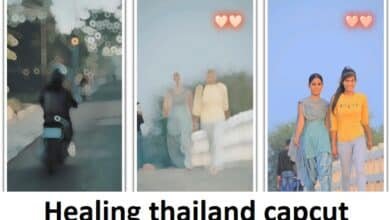
Kahani: The Everlasting Power of Stories in Culture, Emotion, and Expression
The word kahani is deeply rooted in human civilization, transcending time, languages, and borders. A kahani is more than just a narrative; it is a reflection of culture, values, and emotions passed down through generations. In ancient times, elders would share a kahani around firepits or village gatherings, preserving traditions orally. Every kahani was a window into the beliefs and morals of a community, acting as a vital medium to shape the mindset of youth. Whether it’s a folk tale or a mythological kahani, the objective has always been to teach, inspire, and entertain.
Kahani as a Tool of Emotional Expression and Healing
A kahani serves as a powerful emotional tool that helps people process their feelings. Whether shared verbally or written down, a kahani has the ability to transport listeners or readers into another world, enabling them to find solace, joy, or even catharsis. A personal kahani, such as that of love lost or dreams achieved, can heal wounds and validate one’s struggles. Therapists often use narrative therapy where clients are encouraged to craft their own kahani as a form of self-discovery. Thus, a kahani isn’t just a tale—it’s an emotional bridge between the storyteller and the listener.
Types of Kahani: From Fairy Tales to Real-Life Stories
There is no singular format of a kahani. Depending on the context, a kahani can be a folk tale, fable, myth, or even a modern-day personal anecdote. In literature, we find fictional kahaniyan in the form of short stories or novels. Then there are historical kahaniyan, which recount real-life events but are dramatized to highlight key emotional and cultural elements. A fantasy kahani explores imaginative worlds, while an inspirational kahani motivates people with real stories of success. Regardless of type, each kahani plays a vital role in shaping perspective and providing entertainment.
Kahani in Indian Cinema and Television
In India, the word kahani resonates strongly with both cinema and television. Every movie is essentially a visual kahani brought to life. Shows like “Kahaani Ghar Ghar Kii” or films like “Kahaani” (2012 starring Vidya Balan) reflect the word’s deep-rooted connection to drama, suspense, and emotion. A successful Bollywood film is often judged by how strong its kahani is. Scriptwriters and directors spend years perfecting a kahani to ensure it connects with the audience. From romantic comedies to political thrillers, the soul of every successful production lies in its compelling kahani.
The Art of Writing a Memorable Kahani
Writing a kahani is an art that combines imagination, structure, emotion, and technique. A powerful kahani usually begins with a hook that grabs attention, followed by character development, conflict, climax, and a satisfying conclusion. A well-written kahani should have emotional depth, believable dialogues, and relatability. Writers like Ruskin Bond, Premchand, and Rabindranath Tagore have mastered the art of kahani writing, leaving behind a treasure of stories that are still loved. In modern times, even bloggers and influencers are learning to write their life kahani to connect with wider audiences.
Why Kahani Still Matters in the Digital Age
In an era dominated by reels, short videos, and memes, one might assume the traditional kahani has lost its place—but that couldn’t be further from the truth. People still crave connection, and a well-told kahani provides exactly that. Whether it’s a podcast episode, a YouTube vlog, or a social media caption, users are more likely to engage if there’s a compelling kahani. Platforms like Instagram and TikTok have simply transformed how kahaniyan are presented, not replaced them. Storytelling is now more visual and interactive, yet the essence of a kahani remains unchanged.
Kahani in Educational and Moral Development
A kahani is a powerful teaching tool. In classrooms, educators often use a kahani to teach complex subjects, especially to children. A science concept explained through a kahani is more likely to be retained than a traditional lecture. Similarly, moral education often relies on kahaniyan involving animals or characters that highlight virtues like honesty, kindness, and bravery. Panchatantra and Aesop’s Fables are classic collections that have used the format of kahani to instill moral values for centuries. Thus, a kahani continues to be a timeless tool in nurturing minds.
Conclusion
From ancient epics to modern web series, the kahani remains a timeless treasure. It connects generations, builds empathy, and offers both escape and understanding. Whether through books, films, or social media posts, the kahani has adapted beautifully to every age. What makes a kahani special is its ability to reflect real emotions, carry wisdom, and entertain the soul. In a world constantly evolving, the charm of a kahani is eternal. So next time you read, watch, or share a kahani, know that you are continuing one of the oldest human traditions that still holds immense power.
FAQs
Q1. What is a kahani?
A kahani is a story or narrative that conveys emotions, culture, values, and experiences through spoken or written words.
Q2. Why is a kahani important in Indian culture?
A kahani is deeply rooted in Indian tradition, often used to pass down morals, customs, and values through generations.
Q3. Can anyone write a kahani?
Yes, anyone can write a kahani. All it takes is imagination, structure, and a desire to connect with others through storytelling.
Q4. How has the kahani evolved in the digital world?
The kahani has transformed into digital formats like vlogs, podcasts, and social media content, but the essence remains the same.
Q5. What makes a kahani memorable?
A memorable kahani is one that resonates emotionally, has well-developed characters, and leaves a lasting impression on the audience.




